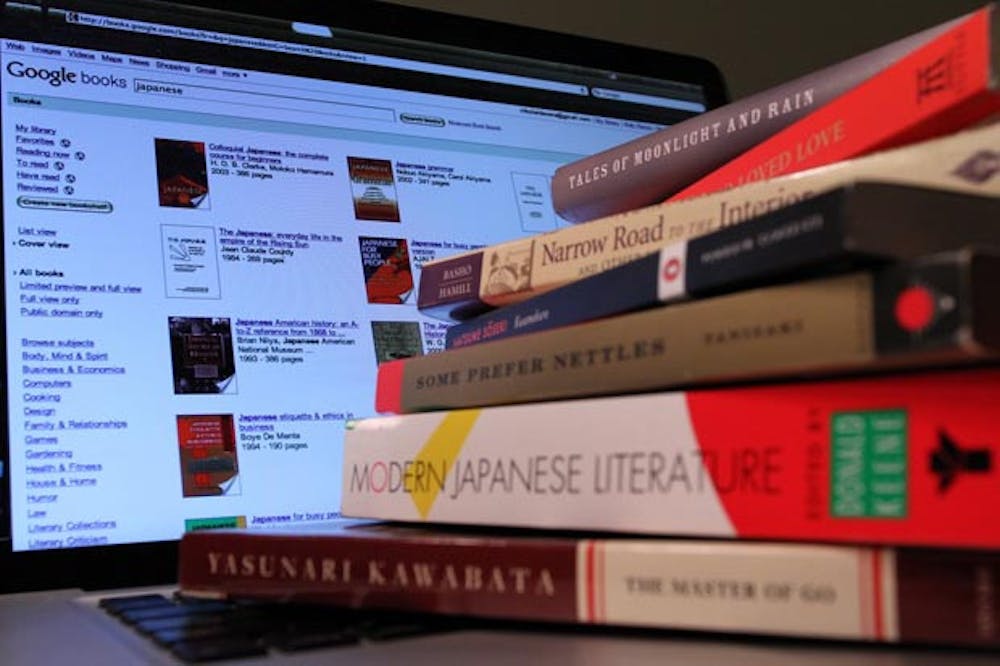As the cost to attend ASU rises each year, alternatives to expensive textbooks are emerging, allowing professors to modify content for their courses while maintaining affordability and accessibility for students.
Students can access open-source textbooks online for free or purchase a printed version through Web sites of open-source textbook providers.
“The Internet has transformed the [textbook] industry,” said Eric Frank, founder and chief marketing officer of open-source textbook company Flat World Knowledge.
Citing examples in music and film, Frank said the publishing industry is experiencing a similar renovation due to technological advances.
Flat World anticipates radical changes in customer expectations, including free content on the Web, he said.
“If you don’t make it free, people will pirate it,” Frank said.
Another expectation is content that can be interacted with, modified and contributed to in a manner similar to Wikipedia.
Julie Smith David, director of ASU’s Center for Advancing Business through Information Technology, said open-source textbooks could spawn a new community for developing and contributing learning materials.
“In the long run, if you have an open source community — a faculty — about a functional area or course, they can create much more content than a textbook,” she said. “I think open-source textbooks are a very small piece of what we really should be thinking about, [which is] open-source academic content.”
Open-source technology is protected by the Creative Commons license, enabling creators to choose which rights are reserved and which rights are waived, in contrast to other copyright laws. This allows a business model to support free content that can be modified by a community while generating income.
Matthew Croucher, an assistant research professor for the W. P. Carey School of Business, said the large benefit of open-source textbooks is the flexible cost.
“From the student point of view, they don’t have to pay as much for the cost of access,” Croucher said. “Also, it’s electronic, so you don’t have to worry about carrying the text around or losing it.”
While the textbooks Flat World offers are free to read online, options are available at various prices for students who wish to own a hard copy. Starting at $24.95, users can download a PDF file of the textbook they print themselves.
For $29.95, Flat World ships a basic black-and-white version to the user. Paying $59.95 gives users a full-color edition of the book in its original format.
“The big problem I had was that textbooks weren’t really accessible,” said John Gallaugher, an associate professor of information systems for Boston College and author of open-source textbook “Information Systems: A Manager’s Guide to Harnessing Technology.”
The field of information systems is constantly shifting because of innovations in technology, Gallaugher and Smith David said, and the conventional printing method is not ideal for contributing new content.
“What I would be looking for is a vibrant community keeping the content up to date and sharing it,” Smith David said. “It’s not just the book, it’s all the supporting materials coming together.”
Gallaugher wrote his textbook with the intention of providing compelling content for his students that other professors could also use to suit their own teaching needs.
“I’ve never heard a student say, ‘That textbook was inspiring,’” Gallaugher said. “This textbook project allows me to take great content, motivate students with compelling content, and we make that content available to other faculty.”
Croucher said the technology allows professors to organize the material to suit their course without worrying about publishing, while enabling students to approach them with comments or concerns.
“The professors can get instant feedback,” Croucher said. “If the student doesn’t understand something, they can e-mail their professor, who can alter it and better explain it.”
While she doesn’t have an interest in creating an open-source textbook herself, Smith David said she would consider using one and that an active community contributing new content “would be really powerful.”
Though the open-source movement has yet to affect the textbook market as Flat World officials hope, Frank said he is confident the initiative will progress in content and quality.
“The reality is, we live in a country where more and more people need to go to college in order to sustain or improve their quality of living,” Frank said. “[Open-source textbooks] bring cost down for students while bringing the experience up, and improves the experience for faculty because they can work on the book.”
Reach the reporter at joseph.schmidt@asu.edu




